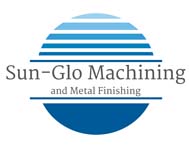Do you work a lot with metals and want to make the metals that you use last longer? There is a process that can be done to protect the metals, and many manufacturers and industries have been relying on experts in the process. It can’t be done at home, but it does need to be done to all usable metals to increase their strength and durability. The process is known as anodizing, and there are many benefits to the anodizing process. There are three different types of anodizing: Type I, Type II, and Type III. Here are some basic things to know about why the process is important and why it should be done by a Chromic Acid Anodizing Expert.
What is anodizing
Anodizing is a process that subjects a metal to an electrolytic action, that is, a chemical reaction, which in turn, coats the surface of the metal with a layer of oxide so that it is better protected, more durable, and in some cases more decorative. Metal, on its own, wears out, rusts, becomes exposed to the elements, and weakens because of corrosion, which happens because metal is constantly exposed to the weather, oxygen, and moisture. Anodizing, when performed by a Chromic Acid Anodizing Expert, protects the metal, but it gives may other benefits as well.
Why is it done
A Chromic Acid Anodizing Expert is important to many industries where quality and durability matter to the manufacturer and the consumer. Consumers pay for the goods that they purchase to last for a long time, whether it is an airplane, a rocket ship, a bridge support, or sporting goods like a golf club or a baseball bat. Durability and strength are essential to all who work with metal. With anodizing, the metal looks better and is easier to repair if something does go wrong. Some anodizing is done for decorative reasons (that is, so the color and the look of the metal can be changed, either through the anodizing itself, or afterwards). Another benefit to some of the types is that the metal can be made luminous: to glow in the dark or to be more reflective at night.
How are the types different?
Type I Anodizing is different because it coats the metal with a much thinner coating that is safer for the Chromic Acid Anodizing Experts, as well as for the metal and the consumer, because it is less corrosive. The danger is that the acid could become trapped or lodged into a weld, and that would compromise the finished product. Although the anodize is thinner, it is for a more specialized purpose. It absorbs less dye, and so can’t be used decoratively. However, it doesn’t conduct electricity or change the product negatively, and it can be painted or dyed black if needed. The anodizing process also improves the adhesion of the product.
Type I is used mostly by Chromic Acid Anodizing Experts for the products that require a lot of flexibility, or precision machining. It has a higher fatigue resistance, but because it is thinner and more flexible, it is sometimes softer and less porous than other types.
When you are looking for just the right kind of protection for your metals and are looking for Chromic Acid Anodizing Experts to help you and advise you, look to the experts at Sun-Glo. We can not only advise you, but can also offer you the best kind of environmentally friendly, thin-coat protection that is long lasting and doesn’t peel or chip.
Sun-Glo Machining and Metal Finishing
quotes@sun-glo.com
800-741-1456
